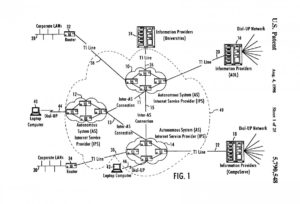Introduction:
In a scene from the movie “Sex Tape”, actor Jason Segel accidentally uploads a sex video of him and his wife to the cloud. When the wife played by Cameron Diaz finds out and both characters go on a mission to delete the tape, Cameron asks “You can’t get it down from the cloud?” where Jason already freaked out answers “Nobody understands the cloud, it’s a mystery.” (English, 2014).
What is the public cloud? Is it really a mystery? Can information be stuck on the cloud indefinitely? To find out the answers to these questions, lets dig deep into what is the cloud in the context of computing, how does it work, and most importantly where does all the data reside.
What is the Cloud:
No, it is not a mystery, the public cloud is a computing model where shared computing services are leased to customers as consumable resources. Instead of purchasing and building a computing infrastructure (Servers, Storage, Networking, Security, applications, backup and Datacenter), it is provided as a service where customers pay for what they consume with minimal management effort and added value in terms of lowering CAPEX, OPEX, Power, Cooling, and providing self-service, elasticity, agility, and high availability (Mell & Grance, 2011).
Public is a key word in the public cloud computing model because it implies that all shared computing resources are hosted at an off-premise entity from which customers buy services from based on specific requirements and needs. All the servers, storage, networking, security, applications, and backup equipment which will eventually hold your data is in a physical site prepared, managed, secured, and operated by the public cloud owner. Yes, it is still the same technology (to some extent true although public providers like Amazon and Facebook are actually building their own networking hardware and software (Metz, 2015)) built in a different geographical location so where does the term cloud fit into this context (Jaeger, et al., 2009).
Why the Term Cloud?
All public cloud services are accessed through the internet thus consumers don’t have insight nor control on were exactly the service being data or otherwise is going to reside except with some cloud providers that allow for region choice of Datacenter (Finn, 2014) yet that’s about it, customers don’t have insight on which Datacenter, rack, host, disk the service is being hosted in a specific region. This accessibility of shared resources in distant locations over the internet is what brought the term “cloud” because if you drew this back in 1996 when it was being visualized, it looked like a cloud (Weinberger, 2015).

Is the Public Cloud “Public?”:
The public cloud is not a public shared file repository although in part it can be configured to be never the less in the context of public cloud services out of the box, data is contained within boundaries that are private by design not accessible to the public with cloud owner abiding by very strict security standards and procedures (Microsoft, 2017) though the public cloud owner can access the data if they choose to do so. Publishing content on the internet is different than putting any kind of data into a cloud service thus it all depends on what kind of public cloud service data is being uploaded, to what purpose it was uploaded, and what kind of security/privacy was applied.
Conclusion:
If Jason and Cameron have thought it through, they could have contacted the cloud owner given that they where the one`s who uploaded the video to this specific cloud service claiming breach of personal privacy and that video would have been removed from that provider cloud. Bear in mind if by then the video had been download then its practically impossible to track or delete it.
References
English, J., 2014. Can a ‘Sex Tape’ really get stuck in the cloud?. [Online]
Available at: http://www.cnbc.com/2014/07/17/using-sex-tape-to-explain-the-cloudcommentary.html
[Accessed 10 02 2017].
Finn, A., 2014. Tips for Choosing a Microsoft Azure Region. [Online]
Available at: https://www.petri.com/tips-choosing-microsoft-azure-region
[Accessed 10 February 2017].
Jaeger, P. T., Lin, J., Grimes, J. M. & Simmons, S. N., 2009. Where is the cloud? Geography, economics, environment, and jurisdiction in cloud computing. First Monday, Volume 14, pp. 4-5.
Mell, P. & Grance, T., 2011. The NIST Definition of Cloud. National Institute of Standards and Technology, pp. 2-4.
Microsoft, 2017. The Trusted Cloud. [Online]
Available at: https://azure.microsoft.com/en-us/support/trust-center/
Metz, a., 2015. How Internet Giants Upended the Networking-Hardware Business. [Online]
Available at: https://www.wired.com/2015/02/google-facebook-amazon-forever-changed-computer-networking/
[Accessed 10 February 2017].